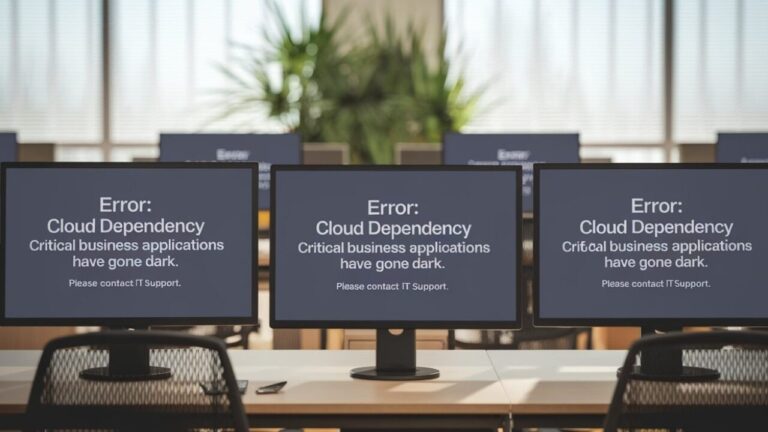The Growing Cloud Dependency
The shift towards cloud computing has offered businesses flexibility, scalability, and cost savings. Nearly 70% of enterprises are in the process of migrating business-critical applications to the cloud, leveraging benefits such as scalability and security updates provided by cloud service providers (CSPs)(BlueXP). However, with increased dependency on the cloud comes increased exposure to risks, particularly when critical applications go dark.
The Risks of Cloud Downtime
1. Financial Losses
When critical business applications experience downtime, the consequences can be severe. On average, downtime costs businesses $300,000 per hour, with larger enterprises incurring even greater losses. In industries like e-commerce and financial services, the inability to process transactions during an outage can lead to significant revenue loss and long-term customer dissatisfaction(SEI).
2. Operational Disruptions
Cloud-hosted business-critical applications such as CRM systems, ERPs, or inventory management platforms are essential for daily operations. A disruption can halt customer service, delay projects, and impede access to important data. While mission-critical applications may result in immediate catastrophic failure, business-critical applications lead to extended productivity losses, which can cause long-term operational damage(BlueXP).
3. Security Vulnerabilities
Cloud environments are not immune to security risks. If a cloud service provider experiences a breach or a failure in multi-tenant separation, your data can become vulnerable to attackers. Stolen credentials, for example, could allow hackers access to sensitive corporate information, impacting both operational security and compliance(Your Integrity Management Ally)(SEI).
Mitigating Cloud Downtime Risks
1. Disaster Recovery and Redundancy
To reduce the impact of cloud outages, businesses should implement robust disaster recovery (DR) plans. These plans ensure that your data and applications are regularly backed up and can be restored quickly in case of a failure. Leveraging automated backup solutions and cloud recovery tools, such as Amazon’s Route 53 Recovery Controller, can reduce the risk of permanent data loss(SEI).
2. Multi-Cloud and Hybrid Cloud Strategies
Relying on a single cloud service provider can lead to “vendor lock-in” and increases your risk in the event of a provider-specific outage. A multi-cloud approach—where businesses use multiple cloud providers for different services—can help distribute risk and ensure continuity if one provider faces downtime(Your Integrity Management Ally). Additionally, hybrid cloud strategies, which combine on-premise and cloud infrastructure, offer flexibility and enhanced disaster resilience.
3. Real-Time Monitoring
To minimize downtime, businesses need real-time monitoring tools that can detect and address cloud service disruptions quickly. Application dependency mapping tools, which identify critical dependencies and interconnections between cloud applications, allow businesses to isolate problem areas and implement targeted recovery solutions(Your Integrity Management Ally).
Conclusion
While the cloud offers numerous advantages, the risks of downtime and outages cannot be ignored. Relying too heavily on cloud services for critical business applications without a contingency plan can lead to financial losses, operational disruptions, and security vulnerabilities. By adopting disaster recovery measures, multi-cloud strategies, and continuous monitoring, businesses can safeguard their operations and mitigate the risks of cloud dependency.
Key Takeaways:
- Monitoring cloud dependencies and regularly testing recovery plans can minimize the damage of potential downtime.
- Downtime of cloud-hosted critical applications can result in significant financial losses and operational inefficiencies.
- Organizations must ensure robust disaster recovery plans and consider multi-cloud or hybrid solutions to mitigate risks.



